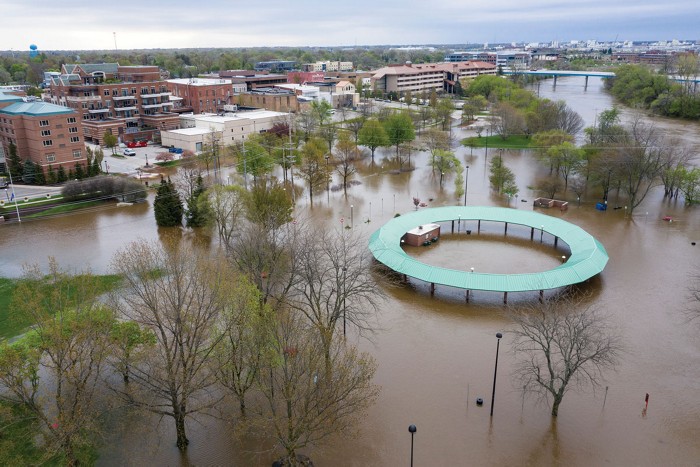Fortunately that Monday in early April hadn’t been a “Monday.” It had been full but fulfilling and productive. It had left me a little tired though so I decided to retreat to my room around 9:30.
I hadn’t planned to fall asleep right away. Pete, my husband, hadn’t yet come to bed, besides, I like a little chill time at the end of the day. Often chill time for me involves music. Now we listen to Pandora via our Alexa echo dots. Back in the day, we listened to the radio. As I lie in bed, I started to reflect on those nights when I used to lie in bed waiting for my favorite songs to come out of the speaker atop my clock radio.
On a whim I did a search for Alan Almond, Pillow Talk, an evening radio show broadcast between 8:00 and midnight that aired for almost 25 years between the 1970’s and 1990’s. I found some YouTube links, and I clicked on the one titled “Alan Almond Tribute RIP,” a reference to the June 2015 passing of the longtime host.
What happened next nearly took my breath away.
Those of you who grew up anywhere in the Metro Detroit area and listened to the show will know. As soon as I heard that velvet voice, I slipped into another place and time.
Immersed in the darkness of our room, lost in the sound of Kool and the Gang’s Summer Madness playing in the background, I listened intently as those long-forgotten yet so familiar words came through my earbuds.
“You’ve been listening to Pillow Talk. My name is Alan Almond, and it’s the witching hour. Time to turn out the light and say goodnight.”
In the darkness the line between memory and reality faded. I was back in my teenage room, in my twin bed with the matching sheet and comforter set, with splashes of the 80’s colors of deep but bright fuchsia. teal, and purple swept across them. The little nightstand between the head of the bed and the wall on my left held the phone, with the same color theme, and the clock radio. The red digital numbers shined in the dark telling me that maybe I had stayed up a little longer than was wise, just to hear that sweet and sultry sign-off.
“Once again I want to thank you very much for spending this time with me tonight, to thank you for being there when I need you, and to thank you for just being you.”
The words sounded perfect over the background of Summer Madness, the song Almond closed the show with every weekend night, and the final words listeners heard before the music faded, “Sweet dreams, angel.”
To be honest, I listened to the short YouTube recording more than once. The video that accompanied the brief tribute featured only a silhouette of the mysterious man whose voice we had heard throughout those years. It was said that no one really knew what he looked like. Clearly several people knew what he looked like, but most of us didn’t. I doubt that mattered to any of us either. I know it hadn’t mattered to me.
I wondered, as I began the shift back to my current reality, why I felt the things I had in those moments, how it was possible to come as close as one can to time travel – truly experiencing a place and time long past, and more so, why I had wished I could linger there for just a while longer.
As I started to read the comments on the YouTube post, I realized that I was not the only one who had been swept away to another place and time by the recording of the longtime nighttime radio show host, because I saw “sweet dreams. angel” in several comments. Then teenagers, now long past that point in our lives, we had been united for a moment in time by that sound, by those memories of a show with a host who had offered a little insight and advice, who had played songs “by request tonight” or sent songs of his choice to people who had called or written in, and who had lulled so many teenagers into sweet dreams.
As I think about that experience in the light of reality, I believe that I actually understand. Life wasn’t perfect for me as a teenager. I had my challenges as we all do, but I also had a good life, and I expect that in my soul and spirit I knew it. I had two parents who were dedicated parents and a sister with whom I shared life as we grew up.
Beyond those things though, I had ideas and thoughts about the kind of person I wanted to become, about the things I wanted to accomplish, about the way my life would look. If I were to be completely honest, I guess I’m going to be, I even wondered as I listened to the short anecdotes of love and heartbreak that Almond would share, if there would be someone in my life one day. Most of the time, that thought wasn’t a priority for me.
I remember even then wondering, what would really happen, how it would all play out.
I looked back on those youthful years, with so much of life ahead and with all of its possibilities, with a bit of envy. As a woman who has now lived half a century, I felt like the wondering, and even the wonder, was all behind me. I have seen how things have turned out, what I have accomplished, and what I haven’t. As I pondered it all, the envy became sadness.
Those days are gone forever, but those feelings, those memories, the joy that I felt reliving all of it for just a few minutes, that was a gift. It showed me something about who I was then, and it also gave me the chance to reconsider where I am now.
Many women consider this stage to be a time for new beginnings. In framing my 50s with that insight, I can indeed experience the wonder again. Though not everything in my life played out the way I had thought it would, or even hoped it would, I find myself in a position to truly live life one day at a time. Of course I have responsibilities and commitments, and a budget, but within reason, I can fill the time as I choose and can do and try things that interest me. As importantly, I can still wonder what I have yet to experience and how life will play out.
PS: I couldn’t end this post without this perhaps cliché but certainly sincere signoff so thanks for the memories to the late Alan Almond.



